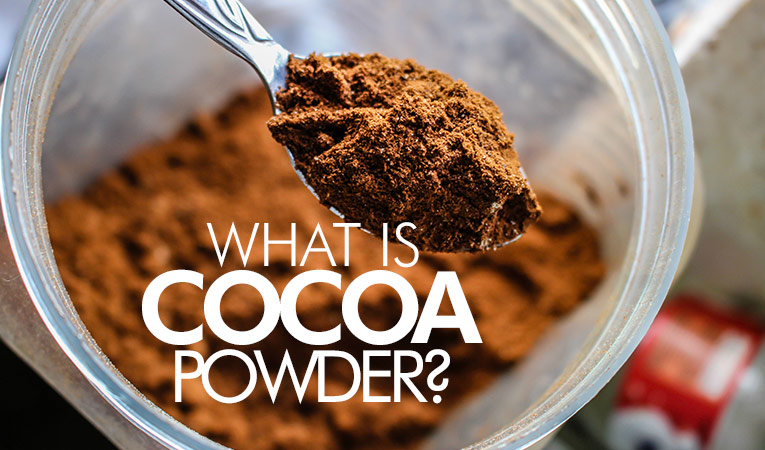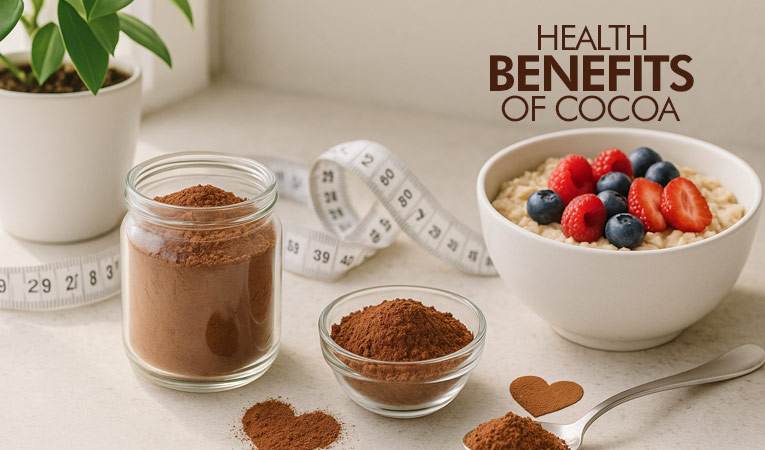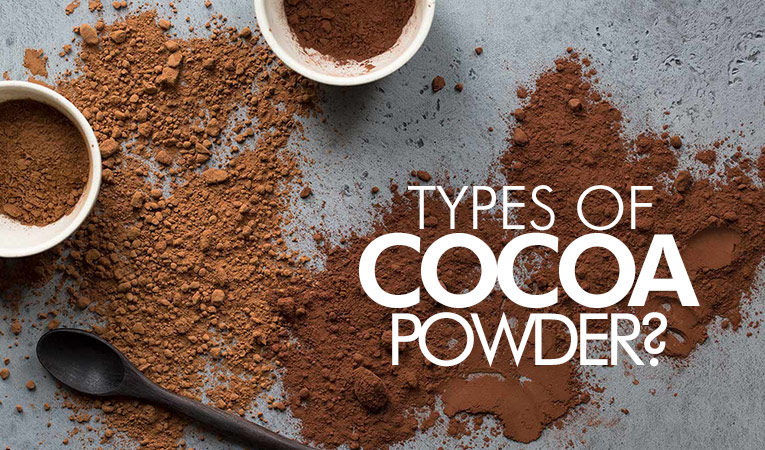What is Cocoa Powder?
16-08-2019

Cocoa powder holds a prominent position among the most widely used baking ingredients, finding its way into a diverse range of applications and recipes, including cakes, cookies, brownies, icing, and chocolates. Understanding the different types of cocoa powder, their appropriate uses, and the techniques for achieving exceptional baking results is of utmost importance. Remarkably, cocoa powder stands as one of the oldest and healthiest foods in existence.
In this discussion, we will delve into the world of cocoa powder, examining its production process, the array of health benefits it offers, the various types available, optimal storage methods, and its versatile application in culinary endeavors.
What is Cocoa Powder?
Cocoa powder is a finely ground, unsweetened powder derived from cocoa beans. The extraction process begins with harvesting ripe cocoa pods and fermenting the beans to enhance their flavors. After fermentation, the beans are dried and roasted to intensify their taste. The roasted beans are then cracked, winnowed, and ground into a paste called chocolate liquor. Through pressing, cocoa butter is separated from the cocoa solids, which are further ground to produce unsweetened cocoa powder. This meticulous extraction process preserves the rich flavor and deep color of chocolate. Widely used in baking, cocoa powder adds a delightful chocolate taste to cakes, cookies, brownies, icing, and chocolates. With its long history and numerous health benefits, cocoa powder remains one of the oldest and healthiest foods worldwide.
Nutrition Facts
Take a moment to review the table below, which provides the nutrition profile of unsweetened cocoa powder per 100 grams.
| Description | Amount (kcal / Grams) |
| Calories: | 400 kcal |
| Fat | 13.7 g |
| – Saturated Fat | 8.1 g |
| – Monounsaturated Fat | 4.6 g |
| – Polyunsaturated Fat | 0.4 g |
| Carbohydrate: | 57.9 g |
| – Fiber | 33.2 g |
| – Sugar | 1.8 g |
| Protein | 19.6 g |
As shown in the table above, cocoa powder has a mixture of carbohydrate, fat, and protein. The great number of fat content is saturated and it contains a substantial amount of fiber.
Vitamin |
Amount (% RDA) |
| Riboflavin | 14 % |
| Niacin | 11 % |
| Folate | 8 % |
| Pantothenic Acid | 3 % |
| Vitamin E | 1 % |
| Vitamin B6 | 6 % |
| Thiamin | 5 % |
| Vitamin K | 3 % |
Cocoa powder has a decent range of vitamins, but it is not particularly high in any of them. B vitamins are the most powerful vitamins in cocoa.
| Mineral | Amount (% RDA) |
| Manganese | 192 % |
| Copper | 189 % |
| Magnesium | 125 % |
| Iron | 77 % |
| Phosphorus | 73 % |
| Zinc | 45 % |
| Potassium | 44 % |
| Selenium | 20 % |
| Calcium | 13 % |
As we can see, cocoa powder supplies a good amount of minerals. Particularly, there is an ample supply of the minerals manganese, copper, magnesium, and phosphorus.

Health Benefits of Cocoa Powder
Cocoa powder offers numerous health benefits due to its high content of nutrients and minerals. Scientific research suggests that cocoa and cocoa powder can provide the following advantages:
- Cancer Prevention: Cocoa powder contains powerful antioxidants that combat free radicals, reduce oxidative stress, and lower the risk of cancer. These antioxidants are abundant in dark-colored fruits, vegetables, and cocoa beans.
- Reduced Risk of Heart Disease: The flavanols and polyphenols present in cocoa powder have anti-inflammatory properties, which can improve heart health. They help prevent blood clots and the buildup of plaque in arteries, reducing the risk of heart disease.
- Blood Pressure Control: Consuming cocoa or cocoa powder rich in flavanols has been found to lower blood pressure. Regular consumption promotes the circulation of nitric oxide, which helps relax arteries and blood vessels.
- Improved Cholesterol Levels: Studies have shown that cocoa flavanols can improve blood lipid profiles, benefiting individuals with normal or high cholesterol levels and those at high risk for heart disease. Cocoa increases HDL cholesterol (the "good" cholesterol) while potentially lowering LDL cholesterol (the "bad" cholesterol).
- Prevention of Heart Attacks and Strokes: Higher consumption of cocoa is associated with a lower risk of cardiovascular events. The antioxidants in cocoa contribute to better heart health by reducing insulin resistance and obesity.
Incorporating cocoa powder into your diet can potentially contribute to lowering blood pressure, improving cholesterol levels, and preventing heart disease.
Concerns Related to Cocoa Powder
While cocoa powder is generally considered a nutritious and healthy food, there are a few concerns to be aware of:
- Heavy Metal Contamination: Cocoa powders may be at risk of containing heavy metals, such as cadmium, which is naturally present in the soil of some cocoa-growing regions. The European Union has set limits for cadmium levels in cocoa powder to ensure consumer safety.
- Sweetened Cocoa Powders: It's important to distinguish between unsweetened cocoa powder and sweetened varieties. While sweetened cocoa powders may offer a more appealing taste, the added sugar can negate the health benefits. Opting for unsweetened cocoa powder is recommended for better health outcomes.
Being mindful of these concerns ensures that you can make informed choices when selecting and consuming cocoa powder, prioritizing safety and health benefits.

Types of Cocoa Powder
There are three primary types of cocoa powder available in the market today:
- Natural Cocoa Powder: Made from processed cocoa solids obtained by pressing cocoa liquor, natural cocoa powder has a light color, slightly acidic taste, and is commonly found in stores. It is naturally vegan and gluten-free.
- Dutch-Process Cocoa: This type of cocoa powder is created by treating cacao beans with an alkalizing agent like potassium solution. This process neutralizes the acidity found in natural unsweetened cocoa powder, resulting in a smoother, mellower flavor and a darker color.
- Black Cocoa Powder: Falling at the end of the Dutch-process cocoa range, black cocoa powder has the lowest acidity and offers a very dark, rich flavor. The outer cookies of an Oreo cookie serve as a great example of the distinct color and taste of black cocoa powder.
Understanding these different types of cocoa powder allows bakers and chocolate enthusiasts to choose the most suitable option for their specific recipes and desired flavors.
Difference between Cocoa Powders
Using the table below let's understand the basic difference between each of these cocoa powder discussed above.
| Natural Cocoa Powder | Dutch Processed Cocoa Powder | Black Cocoa Powder | |
| Process | Prepared using pure cocoa solids | Treated with alkalizing agent | Treated with highly alkalizing agent |
| Colour | Light Brown in Colors | Dark Brown Colors | Darkest Brown in Color |
| Acidity | High | Low | Low |
| Leavener | Baking Soda | Baking Powder | Baking Powder |
| Flavour | Bold, Acidic Flavour | Mellow, Rich Fudge Flavour | Highly Chocolatey |
| Bitterness | High | Moderate | Lowest |
| Propositions | 1:1 | 1:1 | Not as a straight 1:1 |
When do you use Cocoa Powder?
Cocoa powder is commonly used whenever you want to enhance the chocolate flavor in a dish. While it is often associated with desserts, it can also be added to various other recipes such as smoothies, hot chocolate, fruits, and even meat rubs. Cocoa powder provides a rich and chocolatey taste without being overly unhealthy, making it a versatile and enjoyable ingredient to use in a wide range of culinary creations.
How to choose Cocoa Powder for your recipe?
There is a common misconception that cocoa powders can be easily replaced with one another, but in reality, understanding their properties is crucial when selecting the right one for your recipe. Here are some factors to consider before choosing cocoa powder for your next culinary creation.
- The type of cocoa powder can affect the activation of the leavening agent in the recipe, as it depends on the acidic properties. If the recipe calls for baking soda, natural cocoa powder is suitable, but if it requires baking powder or both, Dutch-processed cocoa is recommended.
- In recipes without leaveners like baking powder or baking soda, you can generally substitute natural or Dutch-processed cocoa powder. This applies to sauces, hot cocoa, frostings, ice cream, puddings, and similar dishes.
- When using dark cocoa powder, it is not typically used as a direct 1:1 substitute. Due to its intense dark color and lower bitterness, it is often mixed with Dutch-processed cocoa powder.
By understanding these considerations, you can choose the appropriate cocoa powder to achieve the desired results in your recipes.
How to add Cocoa Powder to Your Diet?
Incorporating cocoa powder into your diet is a delightful way to reap its benefits. Here are some ideas to add cocoa powder to your daily meals and snacks:
- Cocoa with your Coffee: Add a tablespoon of cocoa powder to your hot coffee, along with sugar to taste, to enjoy a cup of coffee with an antioxidant boost.
- Smoothie with Cacao Powder: Blend your favorite fruits, Greek yogurt, a little ice, and one tablespoon of cacao powder for a luscious and chocolatey smoothie.
- Cacao Powder & Fresh Fruit: Sprinkle a dusting of cacao powder over sliced fruits like pineapple, bananas, raspberries, or mango to complement their natural sweetness with the powerful flavor of cocoa.
- Cacao Brownies: Substitute natural cacao powder for cocoa powder in your favorite brownie recipe, adjusting the sugar and leavening agents to balance the intensity and acidic properties. Indulge in rich and delicious cacao brownies.
- Elevate your Yogurt: Enhance the taste of your yogurt by layering it with cocoa powder, fruits, and yogurt to create a delightful and healthy parfait.
By incorporating cocoa powder into these simple and delicious recipes, you can enjoy the health benefits of cacao while satisfying your chocolate cravings.
How to store Cocoa Powder?
To properly store cocoa powder and maintain its quality, follow these guidelines:
- Choose the right storage location: Find a dark, cool, and dry place to store your cocoa powder. Avoid areas exposed to direct sunlight or sources of heat, such as near the stove or oven.
- Use an airtight container: Transfer the cocoa powder to an airtight container to protect it from moisture and oxygen. A tightly sealed jar or a resealable bag works well for this purpose.
- Minimize exposure to humidity: Keep the cocoa powder away from humid environments, as moisture can cause it to clump and spoil. Avoid storing it in the refrigerator unless it is vacuum-packed, as the fridge tends to be a relatively humid environment.
- Avoid contamination: Ensure the container is clean and free from any odors that can transfer to the cocoa powder. Store it away from strong-smelling substances to prevent flavor absorption.
By storing cocoa powder in a cool, dark, and dry place, protected from humidity and sealed in an airtight container, you can extend its shelf life and maintain its quality for a longer period.
How do you know if Cocoa Powder is bad or spoiled?
To determine if cocoa powder is bad or spoiled, consider the following indicators:
- Odor: If the cocoa powder has a rancid or off-putting odor, it is likely no longer good. Fresh cocoa powder should have a rich, chocolatey aroma.
- Flavor: Taste a small amount of the cocoa powder. If it tastes stale, sour, or has an unpleasant flavor, it has likely gone bad. Cocoa powder should have a deep, bitter-sweet chocolate taste.
- Appearance: Visually inspect the cocoa powder. If it appears clumpy, discolored, or has developed an unusual texture, it may have spoiled. Mold growth or the presence of any foreign objects, such as insects, is a clear sign of spoilage and should be discarded.
If any of these signs are present, it is best to err on the side of caution and discard the cocoa powder. Using spoiled cocoa powder can lead to an unpleasant taste and potentially cause foodborne illness.
Where to buy Cocoa Powder?
In India, cocoa powder is easily accessible both in physical retail stores and online platforms. Renowned brands like Callebaut, Cacao Barry, and Van Houten offer popular varieties of cocoa powder that can be conveniently purchased online from Bakerykart. These brands provide high-quality cocoa powder known for its rich flavor and versatility in various culinary creations. The cocoa powder is available in different quantities, ranging from 1kg to 10kg packs, catering to the needs of both home bakers and professional establishments. Whether you're looking to bake indulgent desserts or enhance the taste of your beverages, these reputable brands offer reliable options to elevate your culinary experiences.
Conclusion
We hope you found our blog informative and enjoyed learning about the various benefits and uses of cocoa powder. We value your input and would be delighted to hear from you about your personal experiences with cocoa powder. Please share your thoughts on how you incorporate cocoa powder into your routine, your preferred brand, and the reasons behind your choice. We invite you to leave your comments below and engage in a conversation with fellow readers. Your insights and perspectives will contribute to a richer understanding of cocoa powder and its diverse applications. Thank you for being a part of our community!





